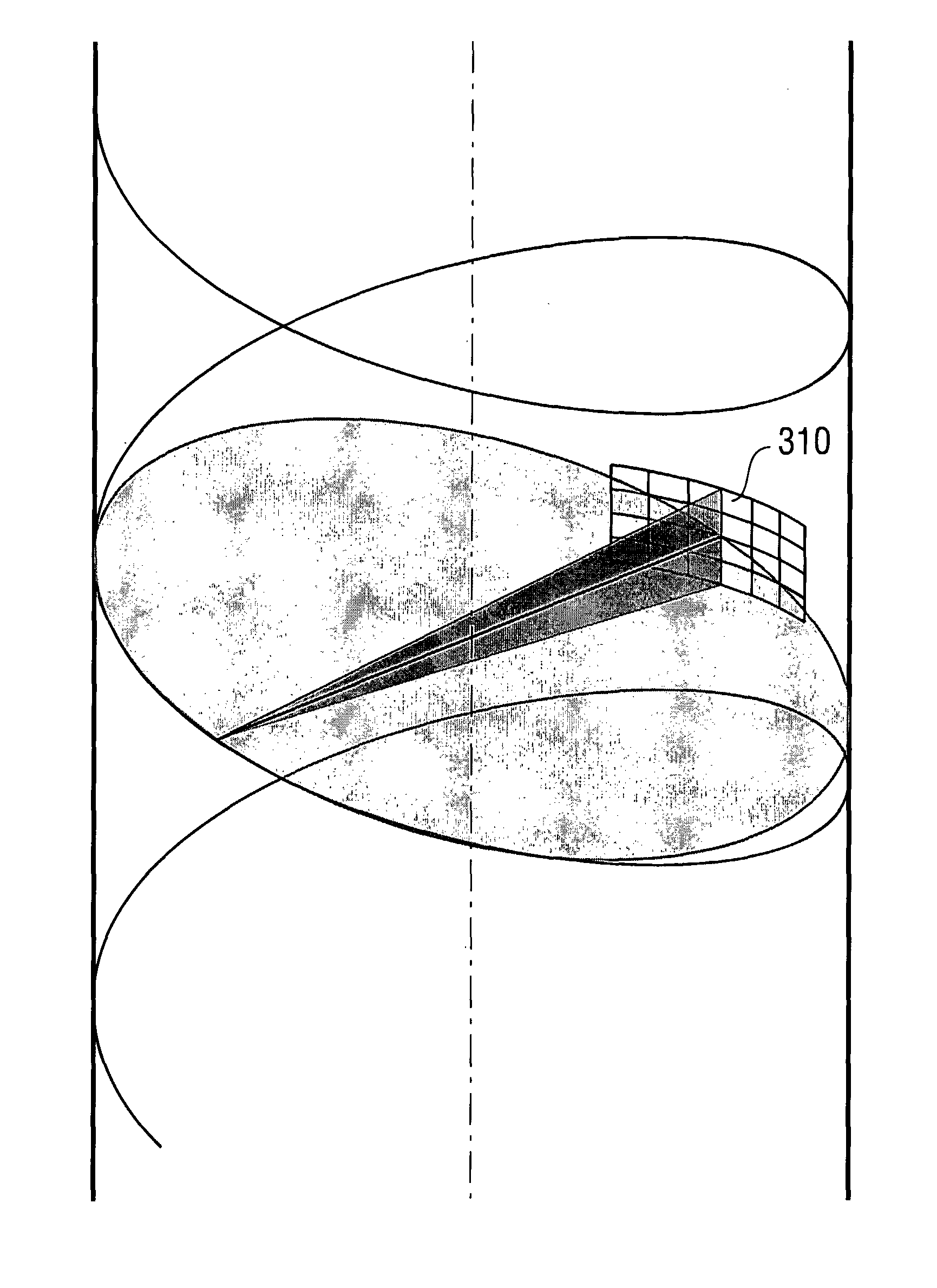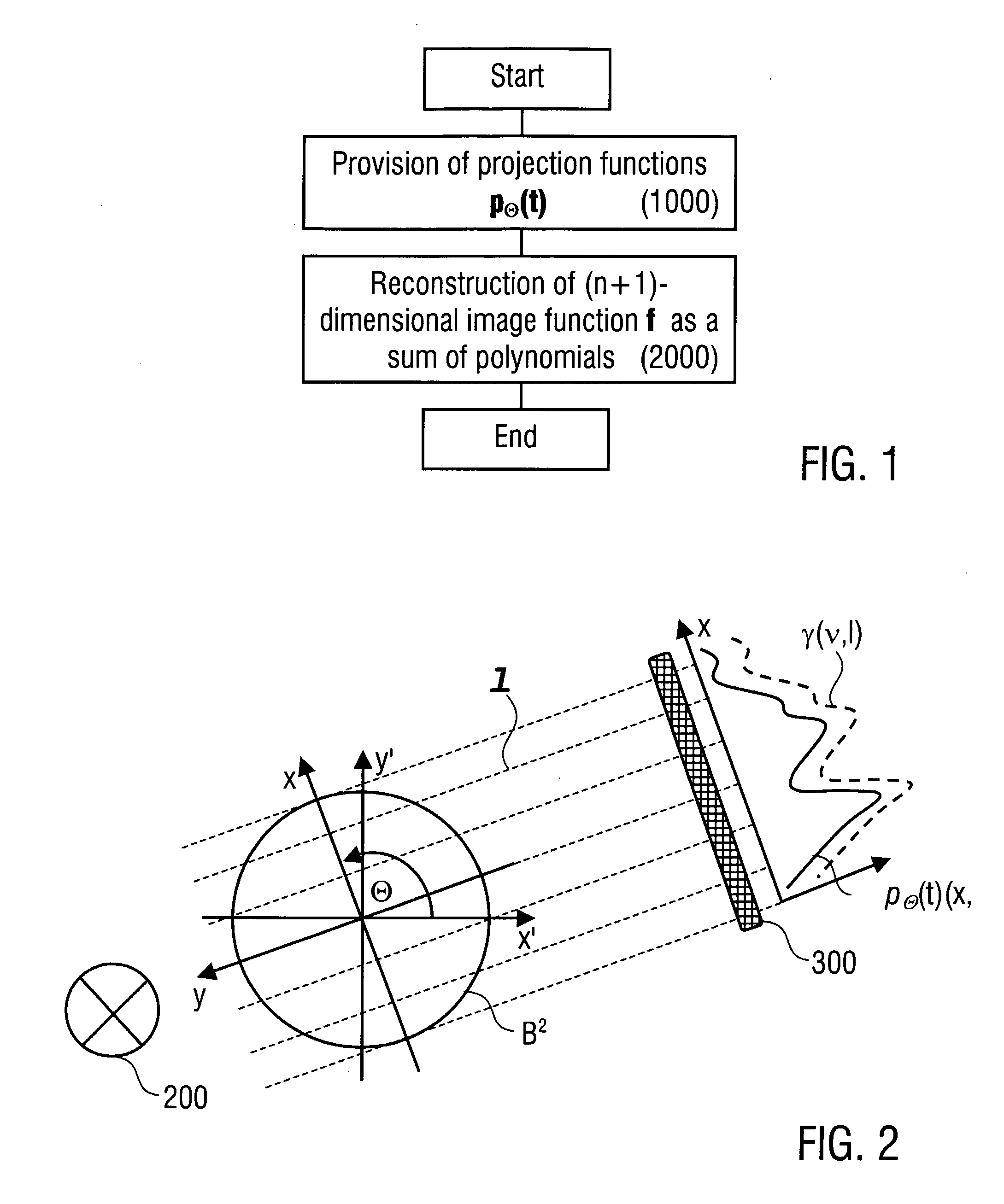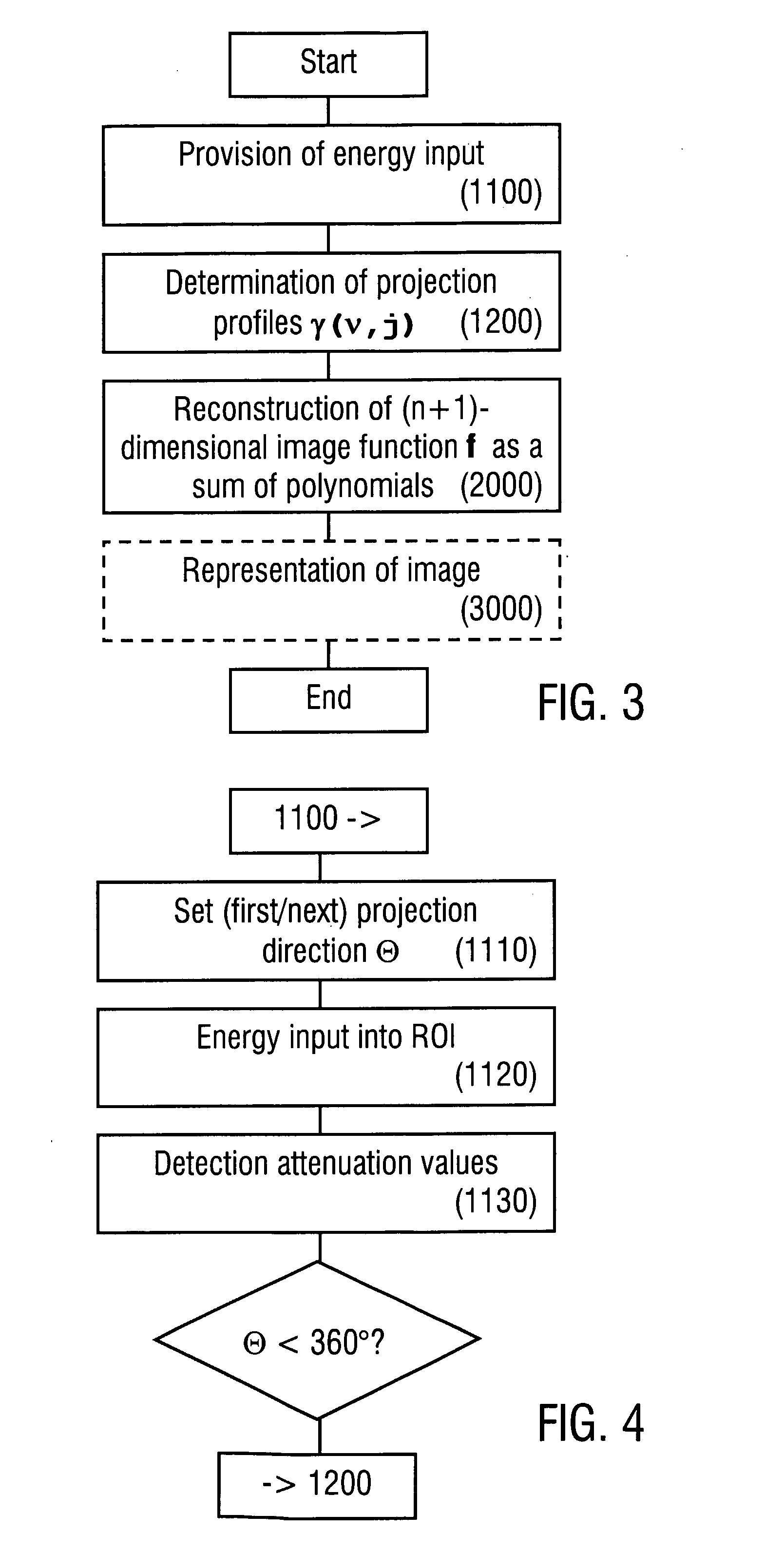Method and Device of Reconstructing an (N+1)-Dimensional Image Function from Radon Data
a radon data and function technology, applied in the field of methods and devices of reconstructing an n+1-dimensional image function from radon data, can solve the problems of inability to reconstruct images with fine details, long calculation time, and errors and artifacts that tend even to increase, so as to achieve the effect of greatly reducing the number of operations
- Summary
- Abstract
- Description
- Claims
- Application Information
AI Technical Summary
Benefits of technology
Problems solved by technology
Method used
Image
Examples
Embodiment Construction
[0083]The invention is described in the following text with reference to the application in computer tomography (sections 1., 2.1). It is emphasized that the invention can be implemented in an analogous way with the other applications mentioned above (examples in section 2.2). Furthermore, the following description of the preferred embodiments mainly refers to the data collection and the data processing. Details of the CT devices used for implementing the invention are not described as far as they are known from conventional CT devices.
[0084]The basic principles of reconstructing an image function representing an ROI are described in the following text with reference to FIGS. 1 and 2. The imaging method of the invention as well as details of imaging devices used according to the invention will be described with reference to FIGS. 3 to 14.
1. Basic Principles of Reconstruction and Imaging
[0085](1.1) According to FIG. 1, the basic steps of a reconstruction method according to the inven...
PUM
 Login to View More
Login to View More Abstract
Description
Claims
Application Information
 Login to View More
Login to View More - R&D
- Intellectual Property
- Life Sciences
- Materials
- Tech Scout
- Unparalleled Data Quality
- Higher Quality Content
- 60% Fewer Hallucinations
Browse by: Latest US Patents, China's latest patents, Technical Efficacy Thesaurus, Application Domain, Technology Topic, Popular Technical Reports.
© 2025 PatSnap. All rights reserved.Legal|Privacy policy|Modern Slavery Act Transparency Statement|Sitemap|About US| Contact US: help@patsnap.com



